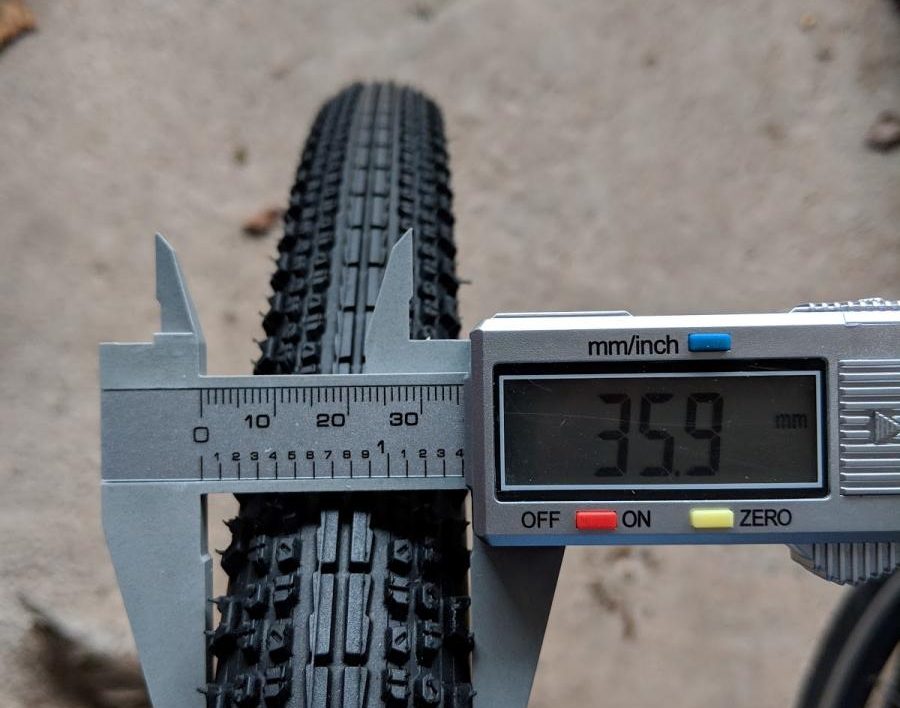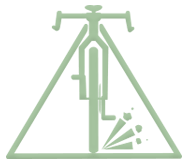
The Versatility Conundrum – One mans Battle with Wheels, Formats, and Tubeless Tyres. Part 2.
Continued
My Kenda Flintridge Pro tyres arrived a week later. These have to be the easiest tyres I have ever setup tubeless. Kenda say that the KSCT casing is designed to not only protect the tyres from cuts and abrasions but also aid in tubeless setup. It could be marketing spiel but like I said the setup was very, very easy. The Flints weighed in at 480g, and measured just under 36mm compared to the WTB which measured bang on the 42mm claimed and weighed 440g. Despite the 6mm difference in width, side by side its hard to see the difference in width between the two tyres, more on this later.
700c Test Ride
For the test ride I tried to pick a route that would emulate the conditions that the Kenda tyres were designed for. According to the graphic from Kenda they are best suited to hardpack, loose over hard or sandy conditions. The test ride was 40 miles, made up of 80% tarmac and 20% fireroad.
Straight away the bike felt very different compared to the 650b setup. It was very quick to get up to speed and very easy to keep the momentum going. Climbing felt much better than the 650b setup, which cannot be put down to weight as there is little between the two setups. Personally I think this has more to do with the effect on gear inches of the larger circumference wheels, therefore travelling further per pedal stroke. Whatever it was this setup was fast and efficient, and that was the goal for this part of the upgrade.
The Hunt wheels have a great reputation, and it is definitely well deserved. At £320 you would be hard pushed to find a better set.
The tyres performed beyond my expectation. They rolled really well on the tarmac, and even better on the gravel. But what really surprised me was the grip in the few muddy sections I had to ride through. The test ride was at the end of a full week of storms and heavy rain, and there were several sections of deep sloppy mud. The Flints did not clog up, and kept giving plenty of grip to keep me moving forward. Turning in the mud was a different story, and they gave up very easily in these conditions as all but the knobbliest of tyres would, so I cannot be too hard on Kenda for that.
Conclusion
What about weight?
Having dropped 850g from the stock setup and then a further 100g with the 700c setup the upgrade appears worth it for the weight saving alone. As good as the Donnelly tyres are, at nearly 700g a piece they are just too heavy to perform.
Did I make the bike more versatile?
I would have to answer, no.
The reason is the lack of tyre choice when it comes to the 650b format. It’s still early days for this wheel size in the gravel world and there are only a handful of tyres available, half of which are slicks. This led me to settle for a 42mm tyre when I actually wanted something closer to 50mm volume.
If Genesis` claim of clearance for 700c x 40mm tyres in the frame had been correct I would of ended up with practically the same volume on both wheelsets. Even after fitting 35mm on the 700c set, the difference in size between these and the 650b set is minimal in reality.
So that means the main physical difference between the two sets is tread pattern. I have essentially ended up with a winter and a summer wheelset which in all honesty could be achieved with one wheelset and a change of tyres, twice a year.
There are handling and ride differences between the two sizes. 650b for example is well suited to tight twisty singletrack, but that doesn’t mean you cannot ride those same trails on a 700c setup. Equally in my testing, the 700c wheelset climbed better, but then how many of us only ride uphill? Each wheelset will have its time to shine and it’s time as a compromise on each and every ride. But, each one is capable, with the right tyre choice, to get you to the finish line.
The conclusion would have to be that its not worth having both sizes to swap between. Each wheel size has its own ride characteristics and strengths and weaknesses. My advice would be to choose the wheel size that suits you and only change tyres to suit the conditions.
The benefits of one setup over another seem so slim and specific to trail conditions that it’s just not worth it, unless you are at the sharp pointy end of gravel racing.



